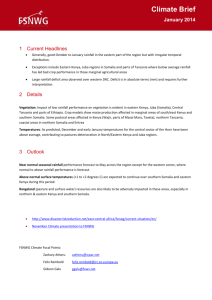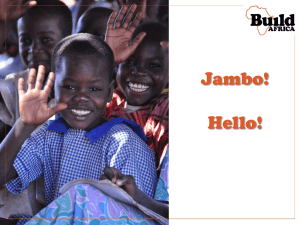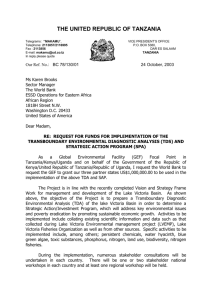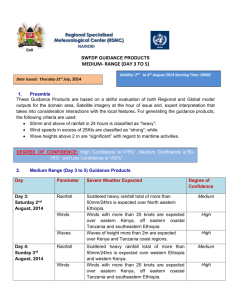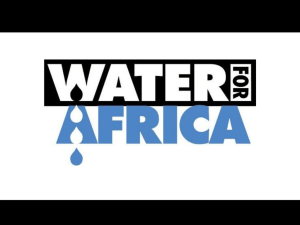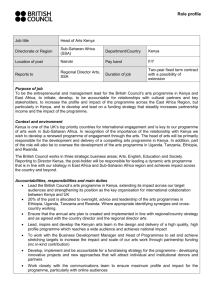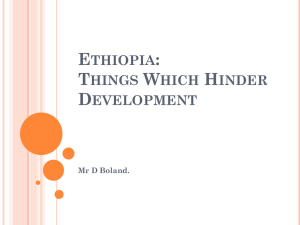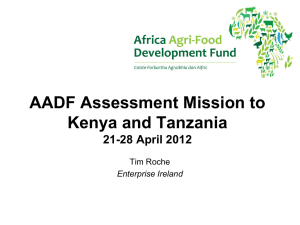East Africa Powerpoint
advertisement
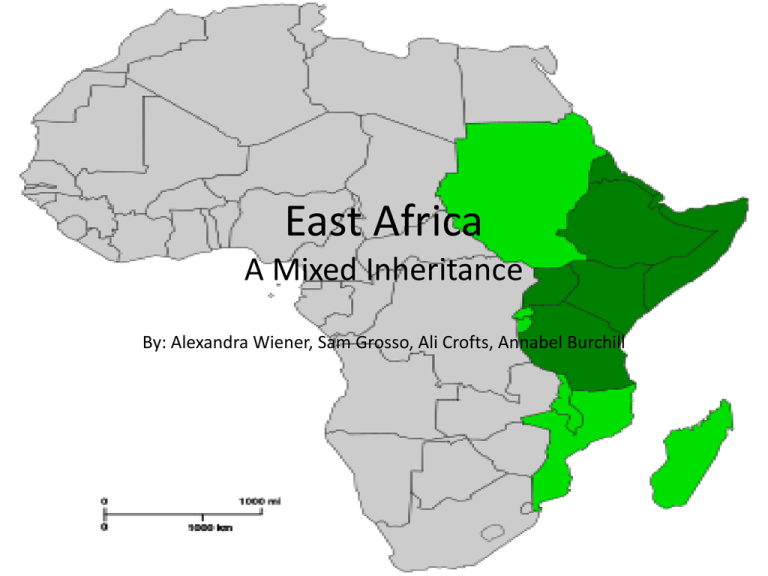
East Africa A Mixed Inheritance By: Alexandra Wiener, Sam Grosso, Ali Crofts, Annabel Burchill Shared Cultural Characteristics: • The value of cattle – Environment is suitable – Cattle are important to the lifestyle • Language (Bantu or Nilotic) – All languages belong to one or the other • Influenced by Arab Islamic culture – Many countries all over East Africa Unique Cultural Characteristics: • Religion – – – – Islamic rule along the coast of East Afrca Many Muslims in North-East Africa Interior of East Africa is Christian Native Religions widely practiced as well • Language – Hundred of languages – Most common is Swahili – Islands of East Africa do not speak Swahili The Horn (Djibouti, Ethiopia, Eritrea, Somalia, Sudan) • Influenced by outside powers – Britain & France (Red Sea) – Suez Canal (1869) – Italy (Eritrea and southeast Somalia) • Battle of Adowa – Italy (occupied Ethiopia) • Politically Alienated – Refugees fleeing armed conflict – Authoritarian Regimes (Ethiopia, Somalia, Sudan) – Wars droughts, famines, staration • Ethiopia – Christian civilization East African Proper (Kenya, Tanzania, Uganda) • Rwanda and Burundi – German control then Belgian – Fighting between tribes • Kenya and Uganda – Taken over by British • EAC (East African Community) • Agreements – East African Meditation Agreement (Kenya, Tanzania, Uganda) – Preferential Trade Area – Permanent Tripartite The Indian Ocean Islands (Comoros, Madagascar, Mauritius, Seychelles) • Influences – Asia, mainland Africa and Europe • All influences by France • Formed Indian Ocean Commission • Link with South Africa Environmental Characteristics: • Tropical and temperate savanna • Tropical rainforest • Great Rift Valley • Very Dry (lower-lying lands of northern Kenya and Greater Somalia are ) Positive Attributes: • Good cattle lands • Great lakes (Albert, Tanganyika, Malawi, Victoria) • Costal Region (ideal for trade) Challenging Attributes: • • • • • Unreliable rainfall Constant fear of drought Famine War and civil unrest No regional community (The Horn) Resources: • • • • • • • • Cattle Iron Oil Copper Gold Uranium (Somalia) Diamonds (Tanzania) Steel Ethnic Groups: • • • • Samburo Maasai Kikuyu (Kenya) Afar Colonial Influences and Treatment of Indigenous People: • • • • • • • Four Islands (French and Asia) Kenya, Uganda, Sudan, part of Somalia (British) Somalia and Eritrea (Italy) Ethiopia (Italy for short period) – then independent British control forced to speak English Italian cotrol forced to speak Italian Forced their own culture on the natives Leaders and Their Impact: • 1977 – Nyerere (Tanzania) – Jomo Kenyena (Kenya) – Idi Amin (Uganda) • 1993 – Daniel Mkapa (Tanzania) – Daniel Arap Moi (Kenya) – Museveni (Uganda) What Does the Title Mean? “A Mixed Inheritance” • East Africa has a wide range of areas in which its been influenced by. Two Questions For the Class: • Name three ways in which Eastern-Africa is similar to either Northern, Central of Western Africa. Explain. • Do you believe that the colonizers of each of the Eastern-African countries has had a lasting affect on the country? Explain.
